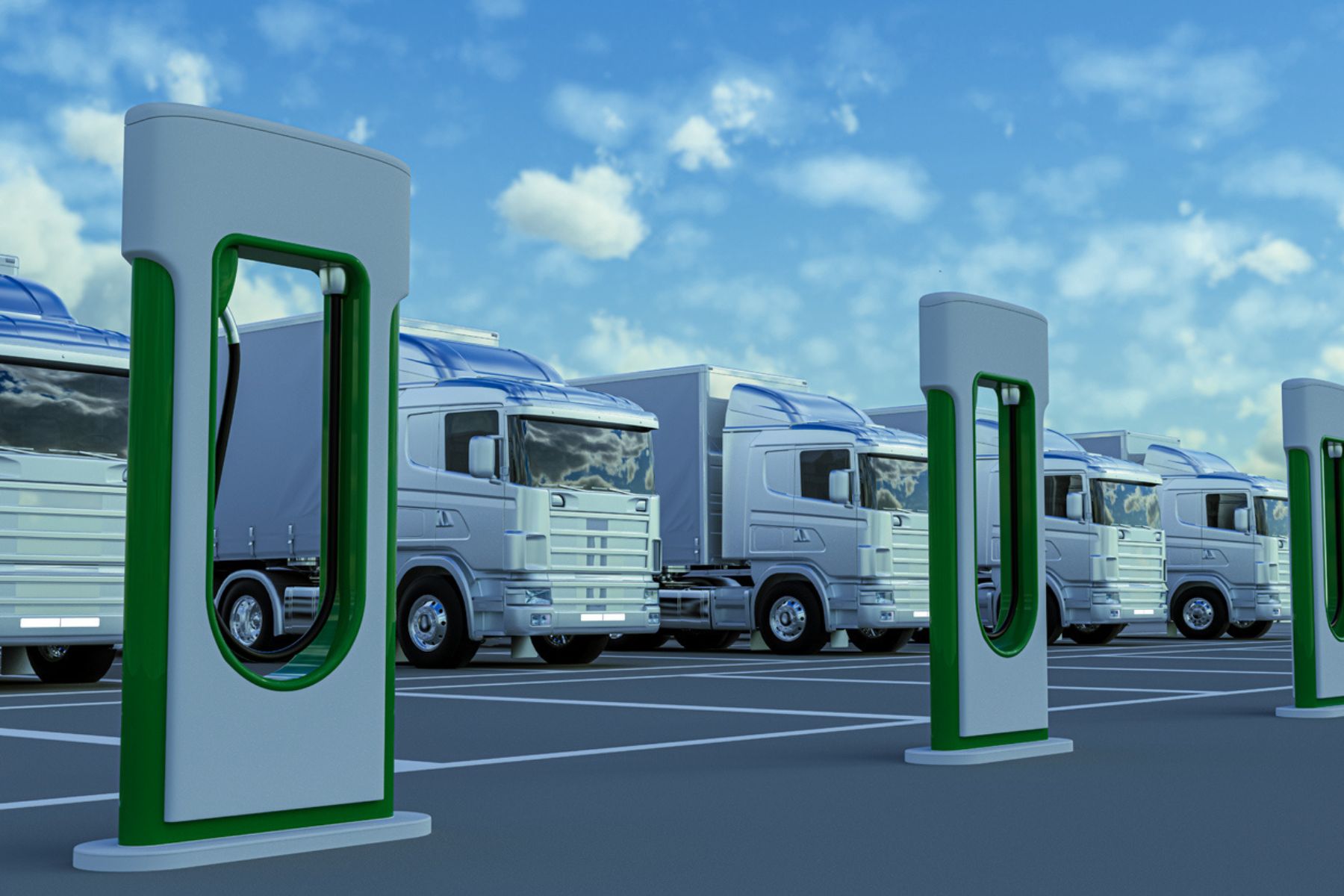Sales mandates for zero-emission medium- and heavy-duty vehicles can set the sector up for long-term success.
The medium- and heavy-duty vehicle (MHDV) sector is a foundational part of the Canadian economy, but it’s also a major source of carbon emissions that is on the rise. In 2021, MHDVs—which include commercial pickup trucks, cargo vans, buses, and freight trucks—accounted for an estimated 61 Mt of emissions, or approximately 9 per cent of Canada’s total. Emissions from the sector have increased over the past couple of decades, driven primarily by rising activity and a growing fleet of vehicles on the road.
With activity in the sector expected to grow even further this decade, improving efficiency and switching to alternative fuels and technologies will be critical to curbing carbon emissions and meeting Canada’s 2030 and 2050 targets.
However, the sector faces unique challenges on the road to net zero. Unlike in the personal transportation sector where electric vehicles are expected to dominate, the future is less certain for MHDVs. Governments have a critical role to play in driving progress in the face of this uncertainty. They can put in place clear signals with technology neutral policies, including sales mandates for zero emissions options, that can leave the door open to many possible solutions.
Progress to date
Despite a growing number of models on the market, Canada has seen very limited uptake of zero-emissions MHDVs–almost all of which have been passenger buses and commercial vans.
The slow uptake of zero-emission vehicles in the sector is not surprising. MHDVs face unique challenges that make it much more difficult to decarbonize, including high upfront costs, lower vehicle availability, technological barriers, slow capital stock turnover, insufficient charging infrastructure, and limited consumer awareness. In fact, both our assessment of the 2030 Emissions Reduction Plan and pathways to Canada’s 2050 net zero target project that by 2030, approximately 80 per cent of MHDVs on the road will still be powered by internal combustion engines (ICE).
In response to the challenges facing the sector, all orders of government have introduced policies to help reduce emissions from MHDVs. At the federal level, the government has committed to developing a zero-emission MHDV sales mandate—requiring that 100 per cent of MHDVs sold in 2040 are zero-emissions, for a subset of vehicles—as well as introduced supporting policies to address barriers to adoption, like funding for charging infrastructure.
A short game and a long game
While our analyses show steadily rising sales of zero- and lower-emissions vehicles to 2030, we find that increased energy efficiency is a major, if not the biggest, driver of emissions reductions this decade (Figure 1). To drive near-term emissions reductions, the federal government can accelerate energy efficiency by moving forward with its commitment to improve regulations for MHDVs in line with the highest standards in North America–whether that be the new proposed US federal rules or state regulations.
This figure shows the role that different solutions play on the path to net zero in the MHDV sector across 62 potential pathways to net zero by 2050. The minimum and maximum represent the range of values estimated in our modelling analysis. The figure shows that in 2030, energy efficiency is projected to be a main driver of emissions reductions but that in 2050, hydrogen, electrification, or biofuels could each be the leading solution, though their roles change depending on different conditions in each scenario, including technology readiness and costs. Total emissions reductions in the sector vary by scenario.
As Figure 1 shows, however, the road to 2050 is less clear cut. Fuel efficiency continues to play a steady and important role, but achieving Canada’s net zero target will require MHDVs to switch to alternative fuels. While our net zero analysis found a clear and certain role for electricity in some MHDV sub-sectors, notably urban vehicles like buses and local delivery trucks, other sub-sectors face greater barriers to electrification. For instance, in long-distance freight, electricity, hydrogen, and biofuels all present possibilities, but face challenges, making it difficult to predict which solution will dominate or whether we'll see a mix.
Driving forward in the face of uncertainty
The uncertainty facing the sector in the long run does not need to slow progress. Many government policies on the table are ‘technology neutral’ and can advance market-driven progress without forcing policy-makers to pick a lane today. In particular, the federal government’s proposed sales mandate for MHDVs is well-suited to manage uncertainty and can lay the groundwork for long-term success.
Critically, the sales mandate can send strong policy signals and expectations about the future of the MHDV sector, while also creating space for a range of fuels to play a role in the long-term. Assuming that the MHDV sales mandate follows the approach of the draft light-duty regulations, multiple vehicles could be eligible—whether battery electric, hydrogen fuel cells, or in theory other emerging tech—so long as they can operate with zero tailpipe emissions.
In addition, many of the benefits of sales mandates for light duty vehicles could also apply for MHDVs–sales mandates can increase supply and model availability in Canada, enhance predictability for consumers and automakers, and jump start investment in infrastructure deployment and supply chains.
While 2050 may seem far away, putting in place clear signals and technology neutral policies today can move the MHDV sector in the right direction. The key to success, however, is fast and effective implementation of these policies, which in the case of both the enhanced fuel efficiency regulations and the sales mandate, have only been announced to date.
Anna Kanduth was the Director of 440 Megatonnes at the Canadian Climate Institute.
